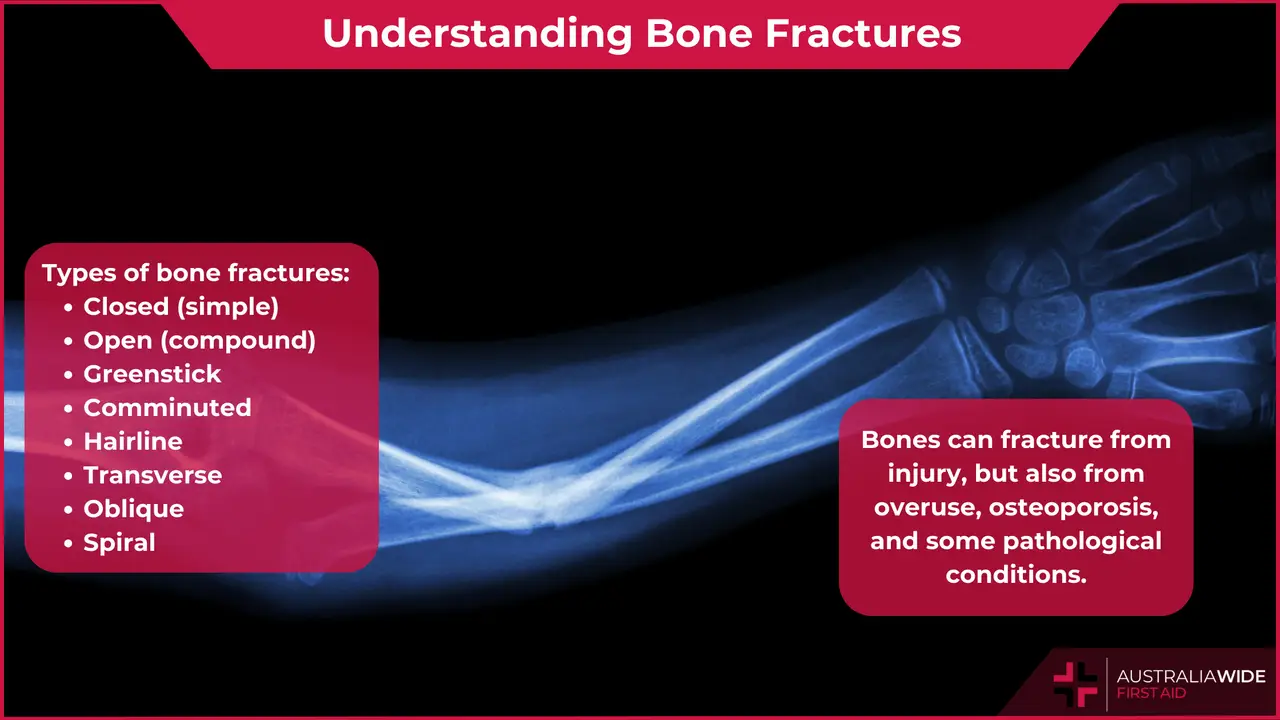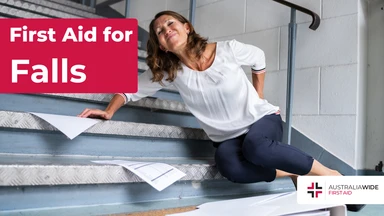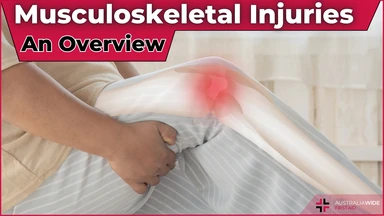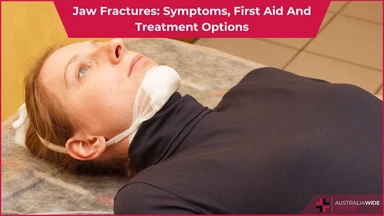Understanding Bone Fractures: A Comprehensive Guide


Bone fractures are a common injury that people may encounter, especially children and active adults.
Understanding the different types of fractures is essential for providing proper first aid.
In this article, we will explore the various types of bone fractures, their causes, symptoms, and initial first aid responses.
A bone fracture occurs when the bone splits or breaks.
There are a number of different types of fractures, named for how the break line sits in relation to the rest of the bone. These include:
Greenstick Fracture:
This type of fracture occurs in children, where the bone is partially broken, resembling a green stick that has been bent. Due to the flexibility of children's bones, they are more likely to experience greenstick fractures.
Comminuted Fracture:
Comminuted fractures involve the bone breaking into multiple fragments. High-impact injuries, such as car accidents or heavy falls, often lead to this type of fracture.
Hairline Fracture:
A hairline fracture is a tiny crack in the bone, which can be challenging to detect. It often results from overuse, repetitive stress, or minor injuries.
Transverse Fracture:
In a transverse fracture, the break is perpendicular to the bone's axis. Typically caused by a direct blow or injury.
Oblique Fracture:
An oblique fracture involves a diagonal break across the bone. This type of fracture commonly occurs in long bones like the femur or tibia.
Spiral Fracture:
A spiral fracture occurs when the bone is broken with a twisting motion. The fracture line wraps around the bone like a corkscrew. They commonly occur when the body is in motion but one extremity is planted still.
Segmental Fracture:
A segmental fracture occurs when the bone breaks in two or more places, with segments completely detached.
Avulsed Fracture:
An avulsed fracture involves a piece of bone being pulled away by the soft tissue that it is attached to.
Each of these fractures can also exhibit one or more of the following characteristics:
Closed Fracture (Simple Fracture):
A closed fracture occurs when the bone breaks but does not penetrate the skin. Commonly caused by falls, accidents, or sports injuries.
Open Fracture (Compound Fracture):
In an open fracture, the broken bone punctures through the skin, creating an external wound. These fractures are more susceptible to infection due to the exposure of the bone. Immediate medical attention is crucial to prevent complications.
Displaced/Nondisplaced:
A displaced fractures means that the bone is no longer in alignment. One or more parts of the bone are sitting out of place. In contrast, a nondisplaced fracture means that the bone is still in alignment, the pieces sitting almost in their normal position.

Recognizing the signs and symptoms of bone fractures is essential for providing prompt first aid. These can include:
When you encounter someone with a suspected bone fracture, follow these initial first aid steps:
Understanding the different types of bone fractures, their causes, and initial first aid responses is crucial for anyone seeking to provide assistance in emergency situations.
By following the appropriate steps and ensuring that professional medical help is summoned, you can make a significant difference in an individual's recovery and overall outcome.
Remember, when in doubt, it is always better to err on the side of caution and seek immediate medical attention for a suspected bone fracture.

March 6, 2025
Falls are one of the most common causes of injury, particularly among children and older adults. Whether it’s a simple trip or a serious fall from height, knowing how to administer first aid can prevent further injury and, in some cases, save a life.

October 1, 2024
The musculoskeletal system is the foundation of human movement, support, and protection, playing a critical role in our ability to perform everyday tasks. Understanding the components and functions of the musculoskeletal system is essential for preventing injuries and managing conditions that may arise, particularly in workplaces where manual handling tasks are common.

August 28, 2024
A jaw fracture is a break or crack in the jawbone. This type of injury can occur due to various reasons and may result in considerable pain and difficulty in performing everyday activities like eating and speaking.